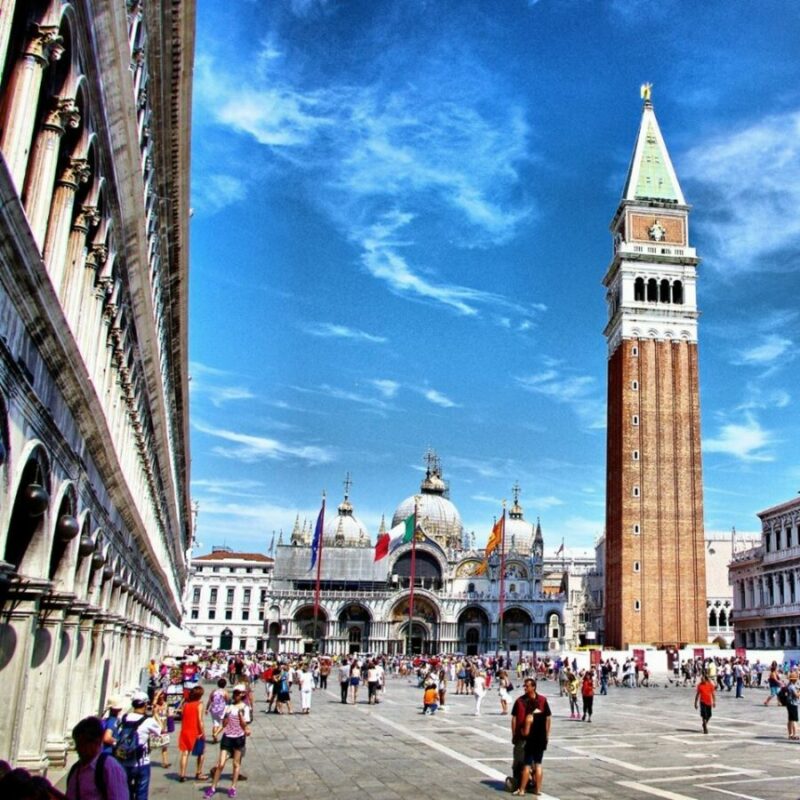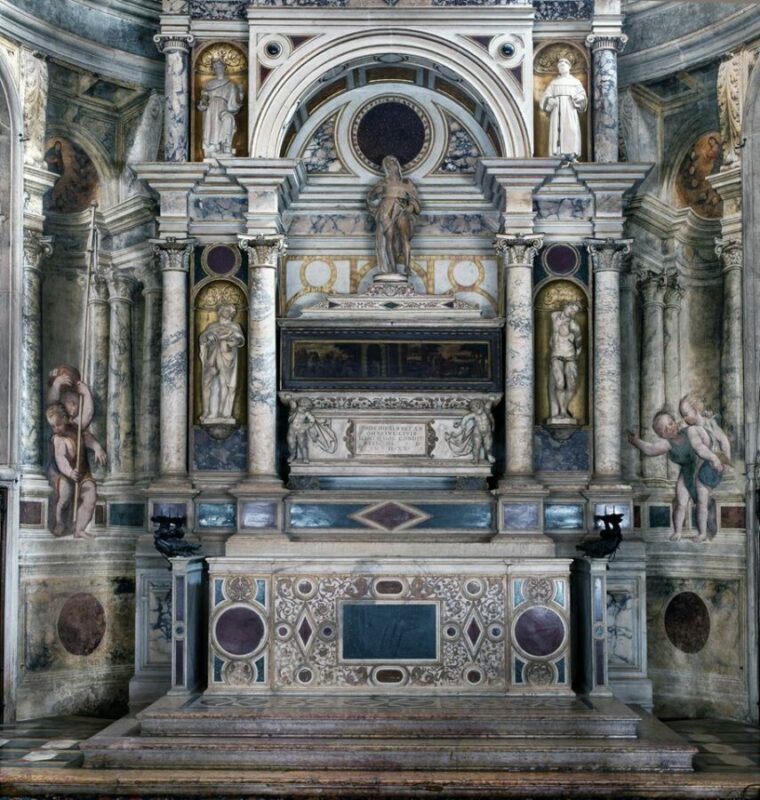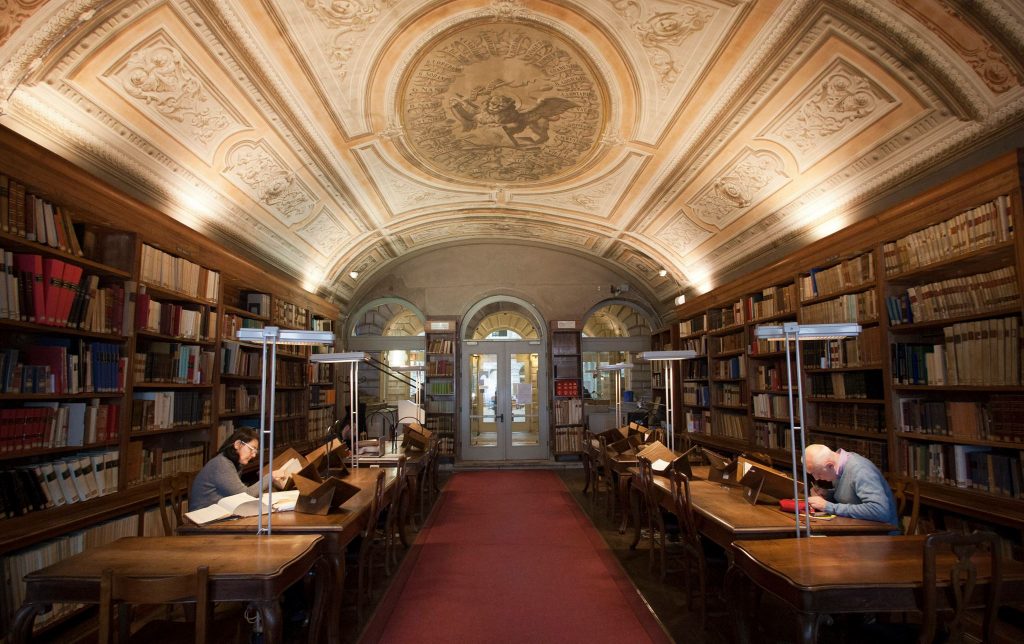10 Best Things to Do in Venice, Italy
Visiting Venice in Italy and wondering what are the best places to see and things to do in Venice? In this guide, we cover all the musts: the main landmarks, must-see sights, and top tourist attractions in Venice that are most worth your time.
Venice seduces all who visit it and can transmit great emotions at any time of the year. Canals, gondolas, bridges, calli, ancient buildings, and masks are the keywords of Venice, a city of traditions, stories, and legends.
The city is one of the favorite destinations of tourists worldwide, known for the processing of its precious glass, its colorful Carnival, for its peculiarity of being a “city in the water.” All this and much more is Venice.
These are the must-see sights and best things to do in Venice:
Piazza San Marco (St Mark’s Square)

Piazza San Marco is the first place to mind when discussing Venice. The large square on which the Basilica stands is perhaps the most famous image of Venice.
Piazza San Marco is the only large space in Venice that has the privilege of being called “piazza” (square), while all other areas with this shape are called “campi.”
The square structure comprises three areas: the Piazza, the Piazzetta San Marco, and the Piazzetta dei Leoncini. The square proper is included between the Old and New Napoleonic Procuratie.
The imposing nature of the Basilica, accompanied by the great figure of the bell tower, offers a truly suggestive architectural spectacle.
After arriving in Piazza San Marco, the first thing to do is to visit the Basilica of the same name because it represents the living legacy of Roman, Byzantine, and Venetian culture. Over the centuries, the inhabitants of the Serenissima have embellished and adorned it with artifacts from the most distant lands of the East.
Legend has it that the need to erect a temple arose following two Venetian merchants’ stealing of the saint’s relics from Alexandria in Egypt.
In the Museum of the Basilica, you can see the Four Horses of San Marco sculptures from Constantinople, which were originally placed on the terrace of the Basilica. Those currently visible externally are, therefore, identical copies.
St Mark’s Campanile

Together with the square and basilica of the same name, the bell tower of San Marco is the other important monument to see in Venice. It is a 99m bell tower, originally built for sighting and defense.
Over the centuries, it has undergone several changes and renovations. Important interventions were also carried out after 14 July 1902 when the bell tower collapsed on the square. It took ten years to rebuild it “as it was and where it was.”
The bell tower of San Marco is also famous for the Flight of the Angel, the opening anniversary of the Venice Carnival.
An artist, attached to a metal cable, flies from the bell cell to the center of the square. Since 1962, an elevator has allowed visitors to reach the summit comfortably in no time.
Palazzo Ducale (Doge’s Palace)

The constant and faithful presence of Venice, Palazzo Ducale (Doge’s Palace) has undergone many variations due to the numerous fires suffered over the years. The Venetians care about this building because it is the custodian of their history and the protagonist of many important events in Venice. The Palace welcomed the Doges of the history of the Republic of Venice.
Palazzo Ducale is, therefore, a must for anyone wishing to deepen the historical, cultural, and political importance of Venice, for centuries, a bridge city between the West and the East. A majestic architecture, an emblem of the Gothic-Venetian style, further enhanced by the enormous amount of art it holds.
Canal Grande ( Grand Canal )

The Canal Grande (Grand Canal), with its characteristic inverted S shape, crosses Venice for 4 kilometers dividing the city into two parts. Almost 4 km long, its width varies according to the areas of the city, and there are places where it is 70 meters wide. It is possible to admire the city from a different point of view by taking part in the tour of the Canal Grande, which starts from the Santa Lucia railway station up to Piazza San Marco: it will offer you wonderful scenery.
By observing the beauty and the harmony of the buildings and the narrow alleys that can be glimpsed as the boat proceeds slowly towards Piazza San Marco, you can understand why Venice has always been one of the most loved cities in the world.
Canal Grande is still the main axis for transportation in the city. The single boat ride costs € 7.00 and is worth 60 minutes.
One of the greatest wishes for those who visit Venice is to take a gondola ride and thus navigate through the canals. A gondola ride is not cheap. The positive side is that a municipal tariff regulates the cost of gondola rides through the canals of Venice. And every berth from which a gondola tour starts exposes a sign with the route’s costs, duration, and details.
The costs are as follows:
day tour: € 80 for 30 minutes (up to 6 people)
tour by night: € 100 for 30 minutes (up to 6 people)
On each gondola, they can climb up to a maximum of 6 people, and the price is always the same. Therefore the more people you are, the lower the price paid will be by each person.
A curiosity: in Venice, there is a kind of collective gondola taxi that the inhabitants call “traghetto.” It stands upright and connects the two banks of the Canal Grande in several places. Above all, it costs very little.
Venice Bridges

In Venice, there are 354 bridges. The lagoon city desperately needs them to connect different areas and make travel easier. The Venetians have transformed a need into a distinctive note of the city: Venice is characteristic precisely for all these “half-moons” that meet along the canals.
The most famous, perhaps, is that of the “Sospiri” (Sighs), whose name derives from the sighs of the condemned who were led to nearby prisons and, looking at the city for the last time, let themselves be assaulted by despair.
The Ponte dei Sospiri contends its fame with the Rialto Bridge, which makes a fine show of itself on the Canal Grande.
It is the oldest – and most famous – of the four bridges that cross the Canal Grande; over the centuries, it has been the subject of numerous works of art.
In 1593 the Rialto Bridge replaced the ancient bridge made with wooden boats that allowed passage to the very popular Rialto market. Today the bridge, covered by arches, is crowded with tourists and vendors, one of the most famous photographic points in the world.
The most recent bridge in Venice, the spectacular Ponte della Costituzione, was designed and built by the great Spanish architect Santiago Calatrava and opened in 2008.
Venetian Ghetto

A few steps from the Venezia Santa Lucia railway station, the Jewish quarter of Venice is one of the most fascinating areas of the city. The Ghetto is the right place to relive five hundred years of Western history and to learn about a different culture.
The history and achievements of the Republic of Venice led the city to be a multicultural pole. The story changed when in 1500, the Jews of the city were all collected in a single neighborhood, the Ghetto, an area formerly used as a foundry.
The Ghetto district is located on a separate island, connected to the city only by two bridges; in this way, the access routes could be easily controlled: the gates were closed at midnight and reopened early in the morning.
The Ghetto is divided into three zones: Ghetto Vecchio (Old Ghetto), Ghetto Nuovo (New Ghetto), and Ghetto Nuovissimo (Newest Ghetto). In reality, the Ghetto Nuovo is the oldest area that was first inhabited by Jews and precisely to accommodate the entire population, the houses were developed vertically, reaching up to eight storeys in height. At times of maximum expansion, up to 5,000 people lived in this city in the city. Here you will discover how the Jews of Venice lived for almost three centuries – from 1516 to 1797.
In the Ghetto, you will find the oldest 5 synagogues, the Jewish museum, the pawnshop, and the homes of Venetians and students, who once welcomed many Jewish families. Synagogues and schools are still active today.
Gallerie dell’Accademia museum

The Gallerie dell’Accademia museum hosts the richest collection of Venetian paintings, from the fourteenth century to the artists of the Renaissance.
Paintings by artists such as: Bellini, Carpaccio, Giorgione, Veronese, Tintoretto and Tiziano, Tiepolo, and the great eighteenth-century landscape painters like Canaletto, Guardi, Bellotto, and Longhi.
Then there are works by Mantegna, Piero Della Francesco, Crivelli, Luca Giordano, Memling, and others. The museum also houses the famous drawing of Leonardo da Vinci, the Vitruvian Man, which is rarely exhibited because light would discolor the ink.
Scuola Grande di San Rocco

The Scuola di San Rocco houses a cycle of works by Tintoretto and is considered by all to be the Sistine Chapel of Venice. The school was the seat of a brotherhood of wealthy Venetians dedicated to charitable works and takes its name from the body of San Rocco, kept here.
In 1564 the Confraternity entrusted Tintoretto with the task of decorating the School. In 24 years, the artist and his students have made a cycle of large canvases.
The works tell of biblical episodes and of the life of Christ in an exceptional pictorial journey, which amazes for the size and the number of painted works.
Marciana Library

The Marciana National Library is in the Piazzetta before the Doge’s Palace. It is one of the masterpieces by architect Sansovino. The grand rooms are accessible to the public and preserve magnificent paintings by Venetian painters. They also host an Archaeological Museum and a library with over 750,000 books.
Peggy Guggenheim Collection

Last, the Peggy Guggenheim Collection in Venice houses and displays works by Picasso, Kandinsky, Magritte, De Chirico, Boccioni, Dalì, and many other artists whose works have become part of art history.
It is one of the most important museums in the world on European and American art of the 20th century, based in the Palazzo Venier dei Leoni on the Canal Grande. The museum is also characterized by an intense calendar of activities with exhibitions, debates, and training initiatives aimed at children.
Read also :







